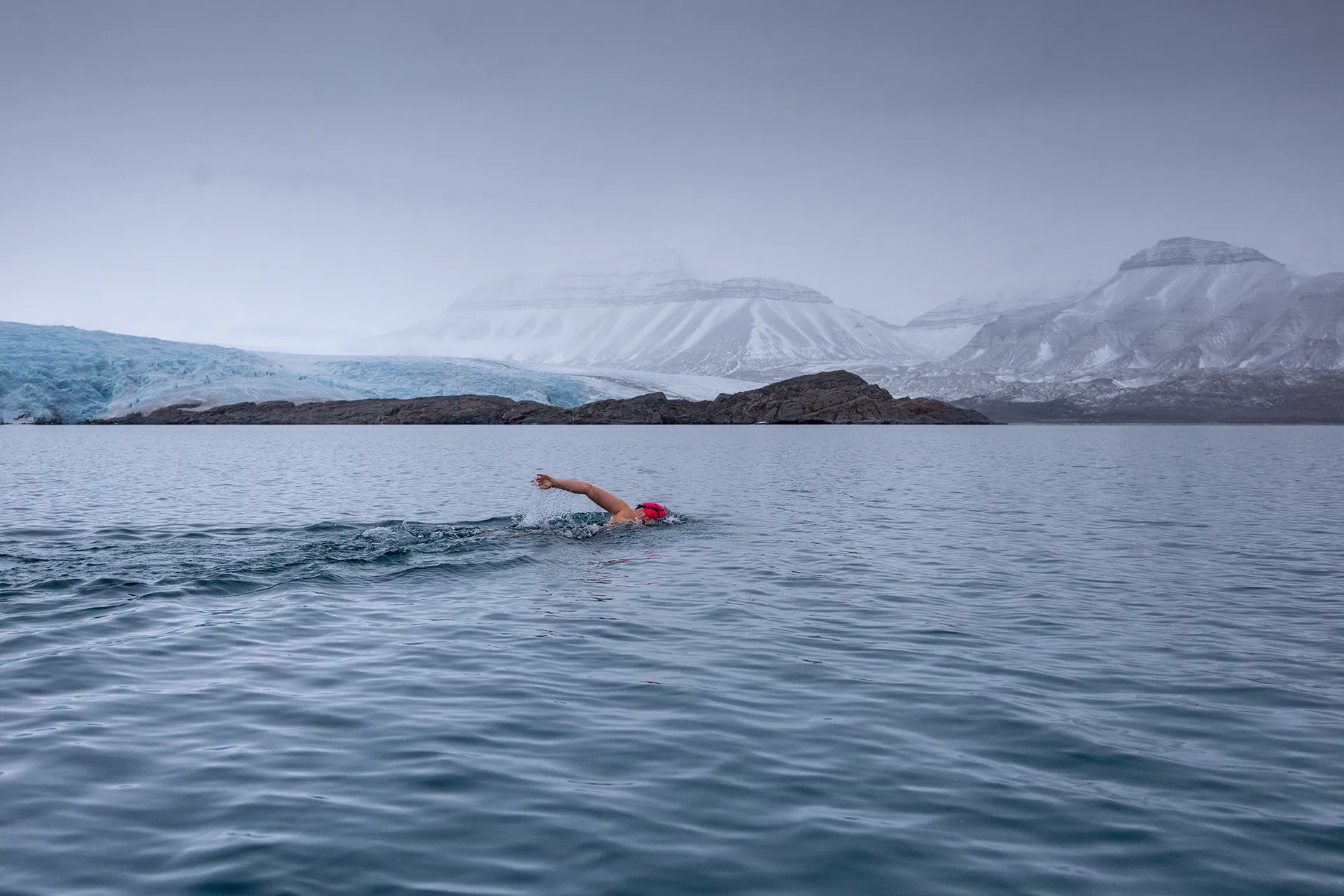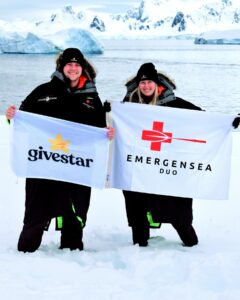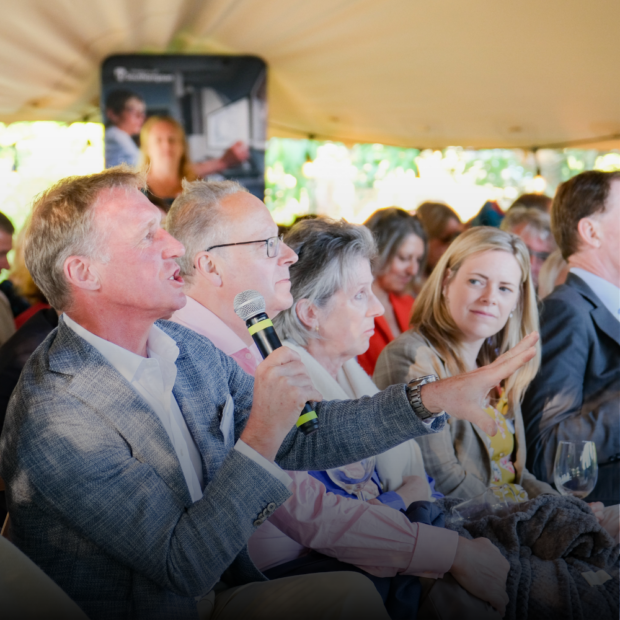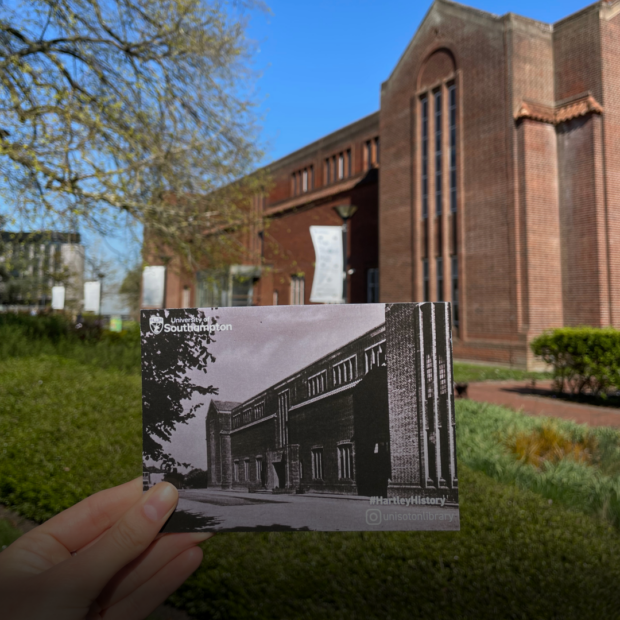Hartley News Online Your alumni and supporter magazine
Charlie and Adam, the Emergensea Duo, met whilst studying medicine at Southampton, graduating in 2013.
At the end of last year they swapped scrubs for swimsuits, and travelled to the ends of the Earth to take on the Archipelago Yachts Polar Swim Challenge, completing an ‘ice swim’ at both poles. The pair braved the sub-zero waters of the Arctic Circle and Antarctica in nothing more than standard swimwear, “No wetsuits, no lard, no excuses”.
To date, only a handful of people have ever done this, as few as have been to the moon.
A story started in Southampton
“We both enjoyed our time at Southampton,” Adam recalls. “I had an amazing first year in Connaught Halls, and the person that pulled up next to me in the car park as we headed in for the very first time remains my best friend today.” Charlie was “instantly drawn to the water”, joining the University Royal Naval Unit (SURNU). She says, “My favourite time was on HMS Blazer, navigating around the UK coastline and across to Germany and Amsterdam.”
Adam remembers the first time he and Charlie crossed paths, “We met within a couple of weeks of starting uni. We had a small group tutorial in one of the rooms in the old Boldrewood building, and I had a hard time finding it. I walked in late and spotted Charlie at the back of the room. I immediately knew she was the one. Charlie just thought I was an idiot for being late!”
After graduating, their passion for adventure and pushing mental and physical boundaries continued, and it was on a polar expedition in Norway, camping under the Northern Lights in -20°C, where Charlie dreamt up the idea of the Emergensea Duo, taking on extreme challenges to raise funds for causes close to their hearts. “Whether this was due to mild hypothermia we shall never know!”, Charlie laughs.
“A night in Jesters is somewhat of an endurance sport in itself, so I’m sure the nights spent there were helpful!”
The coldest swim on record
Fast forward to early 2024, the now married couple, both working full-time – Charlie as an emergency medicine doctor and Adam in palliative care – were making preparations for their polar swim challenge.
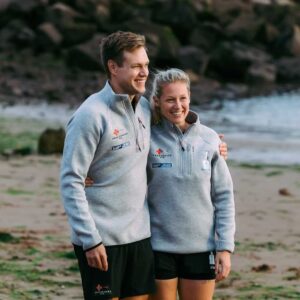
Training was split into three phases. First, acclimatising to the cold with a self-built ice bath. Second, learning to swim in cold conditions, which is very different from remaining static in an ice bath. And last, learning to swim as fast and efficiently as possible to reduce the amount of time required in the water.
“One of the best moments was swimming in a semi-frozen Scottish loch, with the snow falling round us and a golden eagle soaring overhead. It’s always funny to see the horror on people’s faces as they see us get into these very cold bodies of water – a lot of people think we have lost our minds!”
In September 2024, they embarked on the first of their two swims in the glacier waters off Svalbard. The sea temperature was an icy 3.3°C.
“There was nowhere to hide, the ice water was absolutely punishing. Getting into the water we had to control our breathing, heart rate and minds whilst every part of our bodies screamed ‘get out’! We were aware that in this environment literally every second counts, so we started to swim as soon as possible. We found a rhythm and hoped that we could make the distance before our bodies cooled too quickly. The water was a deep aqua blue and tasted fresh from the melting glacier. Charlie’s left side – the side closest to the glacier – soon had no feeling.
“Getting back onto the boat is not where it ends. The body shuts down as it tries to conserve core temperature for vital organs. Rewarming is not pleasant and must be done slowly and in a controlled way. When the shivering kicks in it’s painful – your jaw clenches and every muscle is doing its part to generate heat. It’s not until the shivering stops that you feel the ache of the most intense workout your body has ever been through.”
In November, it was time for the second part of the polar challenge, and despite having acclimatised to cold conditions, the sea temperatures in Antarctica proved more punishing than they could have ever imagined.
“It’s hard to describe just how challenging this swim was. The Arctic circle swim felt cold enough, but the water was nowhere near as cold.”
At -1.67 °C, Charlie’s Antarctica swim has been recorded as the coldest ever official International Ice Swimming Association swim.
“On top of this, she faced wind gusts of over 30 knots. The winds caused large blocks of ice to drift into her swim field. Charlie’s official distance is calculated as a straight line from start to finish, but she had to take quite a meandering course to weave in and out of the icebergs. Adam’s swim was quickly postponed as the conditions were considered ‘unswimmable’.

“Adam was able to attempt his swim the following day in a different location, and thankfully the winds had died down. However, his mouth became so numb that he was unable to tell when he was above or below the water surface and he started to both swallow and aspirate water. He was assisted into a support boat at around 975 metres, just shy of his 1-kilometre target, having spent an incredible 28 minutes in the water.”
Following the swim, both Adam and Charlie had periods of amnesia, and the tips of their fingers and toes remained numb weeks after.
In (sea)sickness and in health
As the Emergensea Duo, Adam and Charlie are no strangers to endurance challenges that push them to their limits.
In 2021, despite never having rowed before, the couple completed the Talisker Whisky Atlantic Challenge, the ‘world’s toughest rowing race’. The 3,219-mile ocean crossing saw 35 pairs navigate choppy Atlantic waters, unaided, from the Canary Islands to Antigua. Adam and Charlie worked in two-hour shifts around the clock, estimating their total number of strokes to be around 1.5 million.
“Our medical training from our time at Southampton was certainly helpful, and Charlie’s seamanship was definitely an added bonus for our rows,” the couple reflect.
At points during the row, the couple were so far from land that they were closer to astronauts located on the International Space Station than they were to inhabited land.
The pair crossed the finish line on day 51, 20kg lighter, and as the first married couple to have ever completed the race.
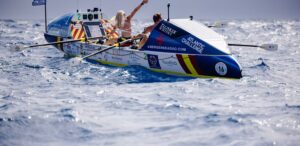
But they weren’t quite ready to let go of their oars. Just three months later, they embarked on their next row – a 1,683-mile unsupported circumnavigation of the UK coastline.
Despite their proximity to home, the forces of the British waters were not to be underestimated. The couple endured storms, the hottest day on record, and – thanks to an unrelenting head wind on the East coast – an unprecedented 35 days on anchor, sheltering from strong winds. After 71 days at sea, and with 89% of the challenge complete, they were forced to call it quits.
This wasn’t the outcome they’d hoped for, but with thousands raised for their charities, this was by no means a failure. As Adam says, “Success has no finish line.”
What’s next for the Emergensea Duo?
“I’m sure something will come up, it always does. But for now, we are just sitting with the memories and taking stock of how fortunate we’ve been to have taken on these incredible challenges.”
Find out more
To learn more about the incredible Emergensea Duo, their challenges and the causes they raise funds for, please visit their website.
